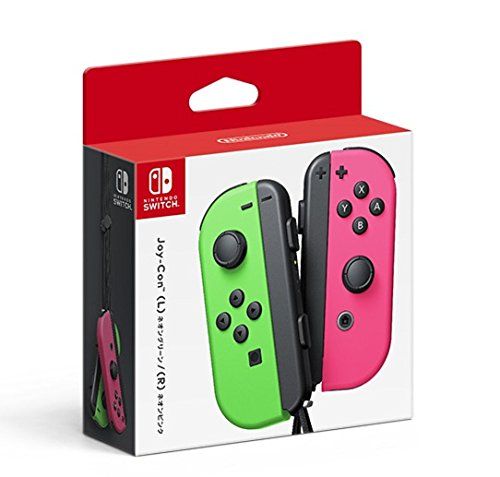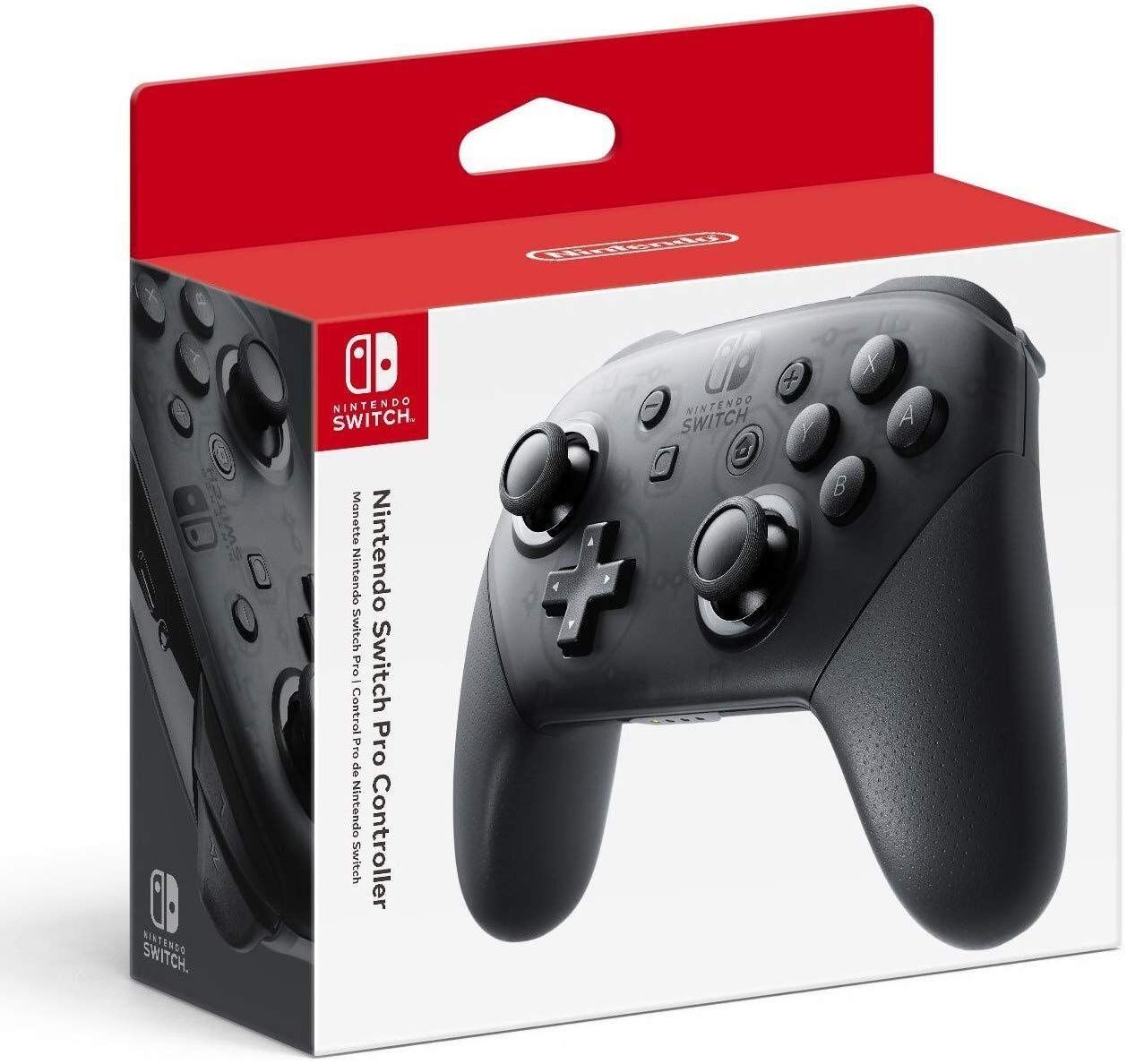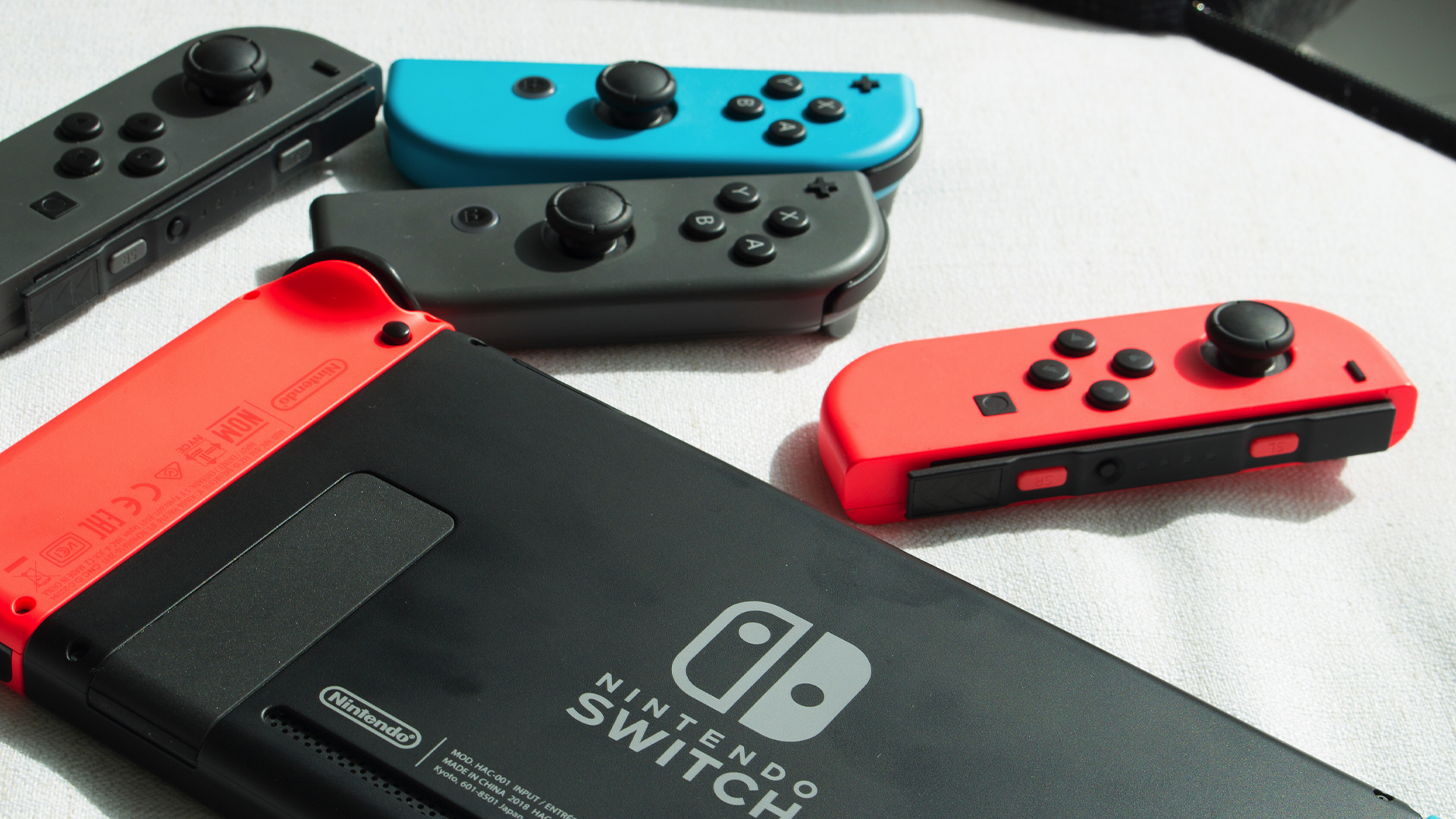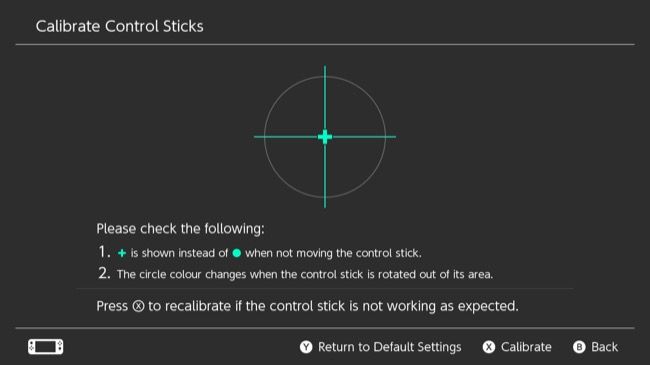Key Takeaways
- Stick drift is caused by wear and tear to the analog joystick mechanism, causing the controller to register input and behave erratically.
- You can fix stick drift by calibrating your controllers, using Nintendos Joy-Con replacement program, or by opening them up and fixing them yourself.
- You can also buy refurbished or new Joy-Con controllers from the My Nintendo Store, or shop around for discounts from other retailers.
Joy-Con stick drift has plagued the Nintendo Switch since shortly after release. Having a controller register unwanted movement can ruin your aim and frustrate you when you’re trying to relax and play some video games. Fortunately, there are a few things you can do.
What Is Stick Drift?
The term “stick drift” describes a problem that causes an analog control stick to register input when no force is applied. The stick may drift in a particular direction (for example, to the left), or it may drift in multiple directions depending on the last direction used. Drift may appear suddenly, over time, or seemingly disappear for a while before coming back again.
The Nintendo Switch has a well-documented history of Stick Drift, and it isn’t necessarily caused by misuse. The Nintendo Switch Pro controller seems to have avoided the issue on a wide-scale basis, but the same can’t be said for Nintendo’s detachable Joy-Con.
You may notice stick drift while playing, but you can also test for the problem using your console’s System Settings > Controllers and Sensors > Calibrate Control Sticks menu. In this menu you’ll be asked to hold a direction on the stick you want to calibrate, then you’ll see a crosshair with either a plus or a dot in it.
If the plus icon isn’t in the center or there’s a dot that seems to move erratically or “lean” in a particular direction, your Joy-Con is displaying signs of stick drift.
What Causes Stick Drift?
The main cause of stick drift of any kind, including controllers from Microsoft and Sony, is wear and tear. Since the analog stick is a moving part, it’s guaranteed to wear out eventually given enough usage.
Controllers make use of a component called a potentiometer to measure voltage and determine the current position of the stick. Damage to the controller can affect the “neutral” position that the stick is meant to return to when it’s not being tilted in a particular position. This can cause the potentiometer to register constant or erratic movements.
This is often due to dust and debris building up within the mechanism, something that’s likely to affect all controllers with enough use over time. In the case of the Nintendo Switch, this threshold was hit a lot sooner than many expected. Some owners have opened up their Joy-Con to find worn-down contacts inside. Nintendo has never clarified why the issue is so prevalent.
Damage to the analog sticks may also trigger the problem. This could include spilling liquid on your controller, dropping the controller, or applying excessive downward force on the analog sticks.
Fix 1: Calibrate Your Controller and Dead Zones
If your controller is showing signs of controller drift, the first step to try is a simple calibration. This is especially effective if you have a controller that appears to be pulling in one direction all of the time but is unlikely to help with erratic movements in all directions.
Head to System Settings > Controllers and Sensors > Calibrate Control Sticks and hold down the analog stick you wish to calibrate. Hit the “X” button on your controller and then select “Calibrate” in the warning that appears to proceed. You can then follow the on-screen instructions to fully calibrate your Joy-Con controller.
You can also help mitigate the problem by calibrating controller dead zones within games. This will need to be done on a game-by-game basis and won’t fix the issue at a system level, but by increasing the dead zone (the threshold by which an input is registered) you may be able to play some titles without drift appearing at all. Not all games allow you to modify this setting.
Fix 2: Use Nintendo’s Joy-Con Repair Program
The Joy-Con stick drift issue is so widespread that Nintendo now runs a repair program purely to address issues with the controller. The program allows for any Joy-Con issues to be addressed and doesn’t mention stick drift specifically, so you may be able to use it to repair non-functioning buttons, motion controls, or infrared sensors too.
Head to joyconrepair.nintendo.com and register or log in, then fill out the form with your name, email, address, and phone number. You can also provide a reason for repair, though Nintendo presumably tests each incoming Joy-Con for problems anyway. You’ll need to specify the number of Joy-Con you are returning, with a maximum of five possible due to lithium-ion battery regulations.
The main caveat here is that you may not get the same color Joy-Con back in the mail. Nintendo requires that you tick a box that states you are happy to receive a “standard color Joy-Con” that’s gray, neon blue, or neon red. Do not include your Switch console or any accessories with your repair request.
Repairs are free for residents in North America and Latin America. If you live outside of these regions you’ll need to apply for a repair using Nintendo’s local repair hub in your country, and you may be charged for the service. We recommend looking at your country’s warranty and consumer laws to understand your rights regardng widespread issues like Joy-Con stick drift.
Fix 3: Repair It Yourself With Spare Parts
If you have a special edition Switch and you don’t fancy taking a chance on Nintendo sending a gray Joy-Con in its place or you’re feeling handy and up to the task, you can try repairing your Joy-Con by yourself. iFixit sells Nintendo Switch Joy-Con replacement joysticks either as a kit (with the tools required) or individually.
You can then follow iFixit’s own handy guide to fixing the right Joy-Con or left Joy-Con. If you have a Switch Lite with integrated Joy-Con there are separate guides to follow for replacing the right analog stick and left analog stick. You can also use these guides with parts you find for sale elsewhere on the web.
Alternatively, Buy a New Set
Sometimes you need something right away, and if waiting for repairs to arrive or spare parts in the mail doesn’t sound particularly appealing, you can always throw money at the problem instead. The My Nintendo Store sells single neon blue, neon red, and gray Joy-Con for $39.99 and refurbished Joy-Con for $29.99. You can get the full set for $79.99, and you’ll have more color options available to you.
You may be able to find a deal at a major retailer, or wait for a sale or promotional event to save even more money. Nintendo routinely releases new color combinations, so if you’re looking for an excuse to give your Switch a new look then this might be it.

Nintendo Switch Joy-Con in Neon Green and Pink
First-party Nintendo Joy-Con controllers in neon pink and neon green. Use the full range of features including motion controls, infrared sensor, and internal batteries to play however you want.
There’s also the possibility to go for third-party Joy-Con, which may be cheaper or have additional features like expanded grips. One such choice is the HORI Split Pad Pro, a Joy-Con replacement with larger analog sticks and face buttons that’s designed especially for those with larger hands.
Unfortunately, many third-party controllers feature shoddy build quality and limited features. The HORI Split Pad Pro is comfortable but it lacks internal batteries, motion controls, and an infrared sensor, and it’s also prone to drifting.
Avoiding Stick Drift in the Future
The easiest way to avoid stick drift is to never use your Switch, but this isn’t a practical solution. Instead, keep a copy of your proof of purchase for any warranty claims you may need to make in the future and have fun with your console.
One practical step you can take if you use your Switch in portable mode is to invest in a hard case. This will prevent pressure from damaging the analog sticks while in a bag, which may cause them to age prematurely.

Nintendo Switch Pro Controller
First-party Nintendo Switch Pro Controller for using your console in docked mode or when propped up in a static environment. The controller includes motion controls but lacks the infrared sensor found on the Joy-Con while providing a far more comfortable feel in the hand.
You can also buy a Nintendo Switch Pro Controller for use in docked mode, which is a much more comfortable playing experience when set up in front of a TV (or when using your console on a static surface like a table).






